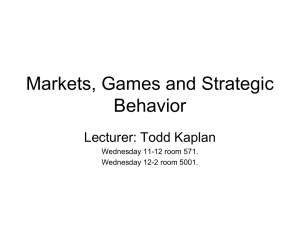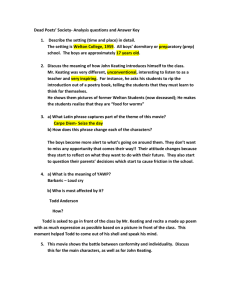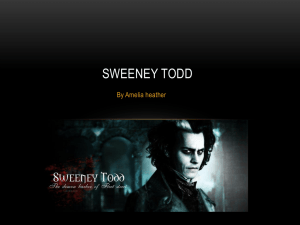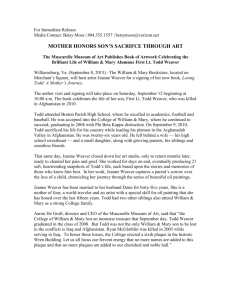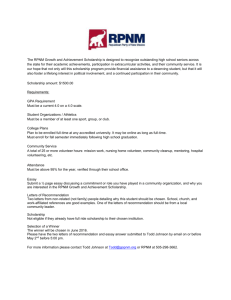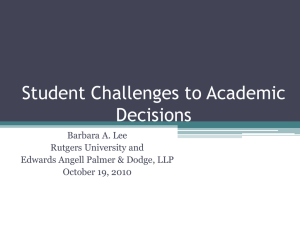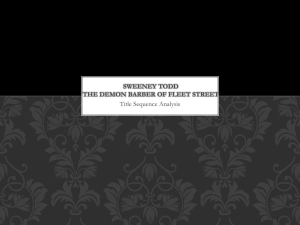CORONERS ACT, 1975 AS AMENDED
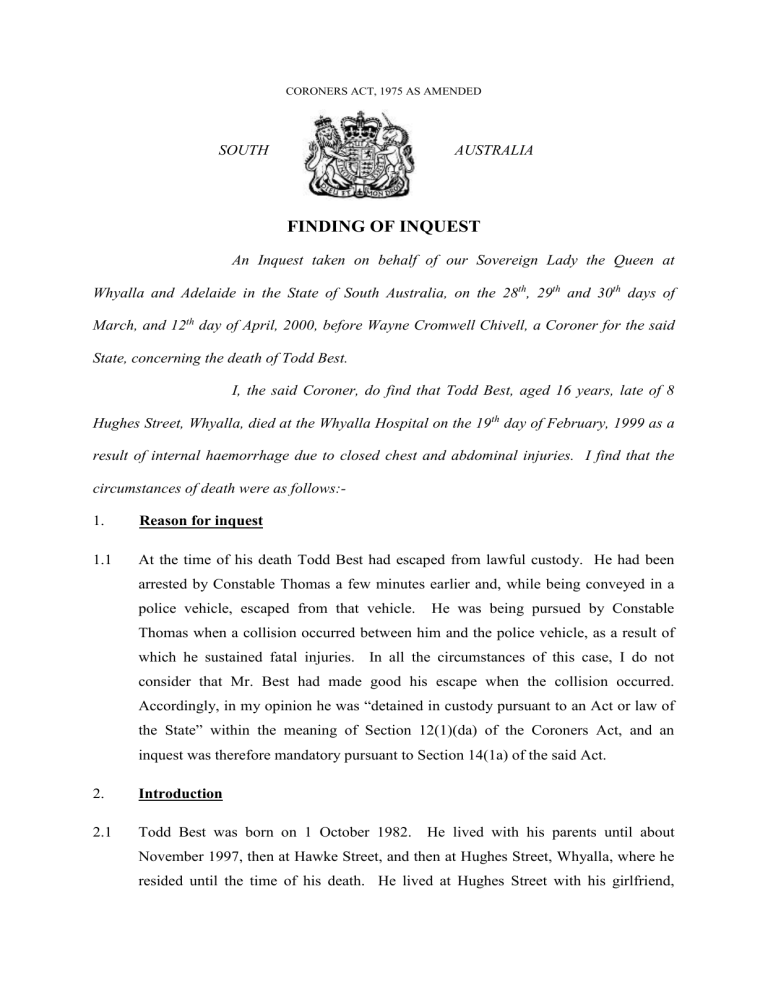
SOUTH
CORONERS ACT, 1975 AS AMENDED
AUSTRALIA
FINDING OF INQUEST
An Inquest taken on behalf of our Sovereign Lady the Queen at
Whyalla and Adelaide in the State of South Australia, on the 28 th
, 29 th
and 30 th
days of
March, and 12 th
day of April, 2000, before Wayne Cromwell Chivell, a Coroner for the said
State, concerning the death of Todd Best.
I, the said Coroner, do find that Todd Best, aged 16 years, late of 8
Hughes Street, Whyalla, died at the Whyalla Hospital on the 19 th day of February, 1999 as a result of internal haemorrhage due to closed chest and abdominal injuries. I find that the circumstances of death were as follows:-
1. Reason for inquest
1.1 At the time of his death Todd Best had escaped from lawful custody. He had been arrested by Constable Thomas a few minutes earlier and, while being conveyed in a police vehicle, escaped from that vehicle. He was being pursued by Constable
Thomas when a collision occurred between him and the police vehicle, as a result of which he sustained fatal injuries. In all the circumstances of this case, I do not consider that Mr. Best had made good his escape when the collision occurred.
Accordingly, in my opinion he was “detained in custody pursuant to an Act or law of the State” within the meaning of Section 12(1)(da) of the Coroners Act, and an inquest was therefore mandatory pursuant to Section 14(1a) of the said Act.
2. Introduction
2.1 Todd Best was born on 1 October 1982. He lived with his parents until about
November 1997, then at Hawke Street, and then at Hughes Street, Whyalla, where he resided until the time of his death. He lived at Hughes Street with his girlfriend,
2
Nicole Connell. His father, Mr. Raymond Best, said that Todd had been in trouble with the police since he left home. He said:-
“Todd has had regular contact with the police and has been in trouble quite frequently with police. I think at the present, he was on a good behaviour bond for several offences, including schoolbreak. He does drink now and then, but him getting in trouble is not directly related to him drinking. He has got into trouble when he hasn’t been drinking.
Basically, his problems with offences began when he was living at Hawke Street and the people he used to hang around with when he was there. He does not have a job, so I don’t (know) what he does on an average day”. (Exhibit C.1a, p2).
2.2 Todd maintained regular contact with his family, and his parents and sister have obviously been severely distressed since his death.
3. Background
3.1 The offence
On Tuesday 18 February 1999 Todd Best, Steven Warwick and some other people were at Hawke Street, Whyalla. At about 2.30a.m. on Wednesday 19 February,
Nicole Connell arrived and she and Todd began arguing about their relationship.
Todd became agitated, so Mr. Warwick asked him to leave. When he refused, several of the men pushed him out the front door.
3.2 At the front door, Todd kicked out and broke it from its bottom hinge. He walked out into the street and began walking up and down, yelling and shouting to Nicole.
3.3 At 3.07a.m. an anonymous call was received at the Whyalla Police Station by
Probationary Constable Jaloshin, complaining about the disturbance. He dispatched or “tasked” Patrol H500 (Constable Peter Thomas on solo patrol) to the area. Acting
Sergeant Stephen Sims, who was the senior officer on duty that night, also told
Jaloshin over the radio that he would attend to assist Thomas.
3.4 Police attendance
Sims and Thomas arrived at Hawke Street at about the same time. Sims spoke to
Warwick, and then instructed Thomas to drive down the street and around the corner to where Todd had gone, and speak to him. Thomas did so, by which time Warwick confirmed that Todd had damaged his door, and that he wanted to press charges against him.
3
3.5 Sims said that Warwick had also told him that Todd was involved in a break-in at a nearby TAFE College (see Exhibit C.28, p2). Warwick denied that he gave Sims such information (T.23), but I doubt the truth of his denial.
3.6 As instructed, Thomas drove from Hawke Street to Hutchinson Street, where he found
Todd Best standing with Peter Reid and a young woman who gave her name as Emma
Best. She was in fact Rebecca Kilpatrick. He spoke to them, and took their names, and radioed to Jaloshin to carry out a warrant check on them. Jaloshin did so, and reported that there were no outstanding warrants for any of the three.
3.7 Thomas advised Sims of what he had done, and Sims directed Thomas to arrest Todd
Best having regard to the information he had by then received from Warwick. Mr.
Braithwaite, counsel for the Best family, said that he did not wish to raise the legality or appropriateness of the decision to arrest before me, so I will not consider that matter further.
3.8 The arrest
Thomas said that he asked Todd to voluntarily accompany him to the police station.
Todd complied, and Thomas then drove back to Hawke Street, where he spoke again to Sims. Thomas said that when he got back into the police vehicle, he told Todd that he was under arrest (Exhibit C.33, p13).
3.9
At Todd’s request, Thomas then drove back to Hutchinson Street, where Todd’s companions were still waiting. Todd told them the situation through the window, and
Thomas drove off. Instead of turning left (which was the more direct way back to the police station), he turned right into Thomas Street.
3.10 Thomas explained in his interview with Detective Superintendent England (Exhibit
C.33) that he allowed Todd to remain in the front seat of the police vehicle (a Falcon utility with a “cage” on the rear) rather than putting him in the back because:-
“He was completely cooperative and he was a juvenile, didn’t like to humiliate him or anything, so he, he was being very reasonable and ... it wasn’t necessary”. (p.19).
4
3.11 In that context, I reject the suggestion, vague as it is, made by Peter Reid, that Thomas assaulted Todd in the car. Reid said:-
“I think the copper banged his head against the window. I was at the back of the van off to the driver’s side of the van. I saw Todd’s head go across and heard a bang. I didn’t see the policeman do anything, though. As he went off I heard Todd say ‘alright, alright’”. (Exhibit C.9a, p2).
3.12 Thomas said that what actually happened was that, as he drove off, Todd opened the door and moved as if he was going to get out. Thomas said that he took hold of
Todd’s jacket and pulled him back to his seat and stopped the car. This corresponds with Reid’ s statement that he saw:-
“The van went off slowly and stopped and went off slowly again and then turned into
Thomas Street ...”. (Exhibit C.9a, p2).
I accept Thomas’ evidence about this incident. As such, I reject any suggestion that an assault or other mistreatment may have caused Todd to escape. Furthermore, I do not see anything sinister about the fact that Thomas turned right rather than left into
Thomas Street. He said that he did so merely so that he could put Todd in the back at a point away from his friends who might have caused a “scene” (Exhibit C.33, p37).
3.13 Having turned into Thomas Street, Constable Thomas then drove the short distance to the junction of that street with Jenkins Avenue, where he stopped again. He said that he spoke to Todd and told him he was going to put him in the back. Todd had apologised and said he would not try again, but Thomas had obviously made up his mind. He said that Todd told him he understood (Exhibit C.33, p17).
3.14 The escape
As Thomas got out of the driver’s door, Todd opened the passenger door of the police vehicle and ran across Jenkins Avenue and into the open country on the other
(western) side of the road.
3.15 Thomas was clear that he decided to put Todd in the back because he tried to open the door while the car was moving, and escape.
5
3.16 Sims, on the other hand, said that he received a call from Jaloshin advising of a fight which was then occurring outside the Eyre Hotel. Jaloshin confirmed that the call was made to the police station at 3.19a.m. Sims said that he called Thomas and told him to put Best in the rear, and then to call in at the Eyre Hotel on his way back to the police station to assist. Thomas said that he had no memory of that call at all. He confirmed that it was not the reason why he wanted to put Todd in the back of the police car (T.127).
3.17 The pursuit
Thomas said that he called on the radio, advising that Todd had escaped. Jaloshin said that he heard Thomas say “he’s done a runner” or “he’s running” or words to that effect (Exhibit C.31, p2). Sims also heard the call and went to Jenkins Avenue.
3.18 Thomas said that he turned right, over the kerb, and into the saltbush area west of
Jenkins Avenue. He said that the area was completely dark. His lights were on high beam. He said that he was 70 to 80 metres into the “scrub” when he saw Todd again.
Todd was to his right, and running in the opposite direction, back (east) towards
Jenkins Avenue.
3.19 Thomas performed a U-turn, and drove back after him. He said that he lost sight of
Todd during the U-turn. He denied the suggestion made by Mr. Braithwaite, counsel for the Best family, that he was “bulldogging” him (which I understand means chasing him closely in the car).
3.20 Sergeant A.L. Mitton, of the Major Crash Investigation Section of SA Police, is a person with great expertise and experience in reconstructing vehicle accidents. He and Senior Constable Mills followed the tracks made by the police vehicle and, using surveying and computer equipment, produced a detailed plan of its movements
(Exhibit C.26). This plan coincides precisely with Thomas’ description of what happened.
3.21 The collision
Thomas said that he was driving carefully at between 10 and 20 kilometres per hour
(Exhibit C.33, p29). He said that he thought Todd would have had time to reach
Jenkins Avenue by then, but he continued looking for him (p.28).
6
3.22
Thomas said that he then had a “glimpse” or a “brief impression” of seeing a head and shoulders, then heard the sound of a collision and of Todd “rolling” under the car
(p.29).
3.23
Thomas said that he applied the brakes immediately and stopped the car “in a car length” (p.30).
3.24 It was put to Thomas by Detective Superintendent England that Todd may have been lying down in a small dip in the ground, and was just getting up when hit by the police car. Thomas accepted this, but was clear that Todd had not been standing, nor had he been running in front of the police vehicle, before the collision (p.31).
3.25 The aftermath
Constable Thomas was obviously deeply shocked by the collision. A civilian witness,
Mrs. J.M. Diggle, said that he sounded “very distressed” (Exhibit C.30, p1). Acting
Sergeant Sims arrived just after the collision occurred, and he said that Thomas was:-
“Very shaken up, very upset. Basically he was just walking around in circles”. (Exhibit
C.28, p7).
3.26 Thomas managed to make a radio call to the police station. Jaloshin said that he heard:-
“Get an ambulance, get it now. Corner of Thomas and Jenkins. 504. Get an ambulance.
Patrols, I need Patrols”. (Exhibit C.31, p2).
Jaloshin logged that call at 3.25a.m. He called the ambulance service at 3.26a.m.
Sims arrived at the scene at 3.27a.m.
3.27 At 3.29a.m., Sims called Jaloshin and requested the presence of the Metropolitan Fire
Service (“MFS”). He did so because they had been unable to extricate Todd from under the vehicle using conventional jacks. Jaloshin said that he first made a call to
Sergeant Hart, then to the MFS, which he logged at 3.30a.m.
3.28
The MFS electronic system noted Jaloshin’s call at 3.36a.m. It is not clear how this discrepancy may have occurred. The Officer in Charge, Mr. W.R. Haynes, received the automatic page at 3.36a.m., and arrived at the scene at 3.49a.m. He was told initially that all they required was assistance with a stretcher-lift. As a result of this,
7 he directed the rescue tender to return to the station. He then went to the scene, realised that the rescue tender was required and so he called it back.
3.29 The rescue tender arrived at 3.51a.m., so the mix-up cost only two minutes. The crew used large air bags and wooden chocks to raise the vehicle sufficiently to extricate
Todd, and he was then conveyed to the ambulance at 4.05a.m. The ambulance then conveyed him to Whyalla Hospital, arriving at 4.12a.m. (see the affidavit of
Glasspool, Exhibit C.12a, p3).
3.30 At Whyalla Hospital
At Whyalla Hospital, Todd was seen by Dr. Rainsford and Dr. Heng. Dr. Heng said:-
“At the scene he was unconscious although he was breathing on his own and only responding to painful stimuli. At the Whyalla Hospital Dr. Rainsford proceeded to insert intravenous lines. The patient was intubated and ventilated. Resuscitation was commenced by Dr. Rainsford and continued by me. Bloods fluids and resuscitation drugs were introduced. He sustained pelvic fracture, right hip fracture and right ankle fracture. All of the above were confirmed by X-ray. The patient also sustained a haematoma to the right hand side of the skull and appeared to be leaking cerebral spinal fluid through the left ear. He received massive transfusion of blood and fluids and also adrenalin and in spite of that we had a lot of difficulty keeping oxygenation and blood pressure up.
At about 10.00a.m. on Friday the 19 th February 1999 resuscitation was ceased as cardiac arrest occurred due to blood loss and prolonged hypotension. I certified life extinct at
10.00a.m.”. (Exhibit C.2a, p2).
3.31 A blood sample taken by Dr. Heng pursuant to the Road Traffic Act was later analysed and found to contain alcohol, in a concentration of 0.022%, tetrahydrocannabinol (THC) and its metabolite 11-nor-9-carboxy-THC.
3.32 The presence of THC and its metabolite indicates that Todd had consumed cannabis and was still under its influence, although the extent to which this influenced his behaviour cannot be determined. The concentration of alcohol is quite low.
3.33 Cause of death
A post mortem was carried out on the body of the deceased by Dr. R.A. James, forensic pathologist, on 22 February 1999. Included in Dr. James’ findings were:-
•
• bruising, swelling and tearing of the right lung; haemothoraces (blood in the pleural cavity) on both sides;
8
•
•
•
• extensive rupturing of the inter-costal muscles on the right side, and several rib fractures; ruptured liver; subarachnoid haemorrhage and brain congestion; fractured pelvic, right ankle and clavicles.
3.34 Dr. James concluded that death was caused by internal haemorrhage, due particularly to the chest and abdominal injuries. He commented:-
“The injury pattern shows no evidence of a primary impact injury on the lower limbs and there is no evidence the deceased was struck while upright.
There is an obvious tyre mark on the right lateral and anterior chest wall with the direction of force going upwards in relation to the deceased lying on his back. The injury is consistent with being inflicted while the deceased was lying on the ground and abrasions were noted on the opposite side of the body on the left back” (Exhibit C3a, p6).
4. The investigation
4.1 Sergeant Mitton, as I have said, analysed the movement of the police vehicle before the collision and produced a computer-generated plan (Exhibit C.26). Of course,
Todd’s footprints had been obliterated during the attempted rescue, so his movements could not be reconstructed.
4.2 Sergeant Mitton also examined the vehicle and found no visible marks on the front of it which were likely to have occurred in the collision. He noted the presence of a depression in the ground, about 300 millimetres deep and two to three metres wide, just to the rear of the police vehicle.
4.3 Sergeant Mitton was unable to determine the speed at which the police vehicle was travelling prior to the collision (Exhibit C.34, p6). There is no evidence before me that the police vehicle was being driven at an excessive speed prior to the collision.
4.4 Sergeant Mitton speculated that there were two possible explanations for the collision.
The first is that Todd was lying down, hiding in the depression when Thomas ran over him. The second is that Todd was running away from the chasing police vehicle when he tripped and fell in front of the vehicle. Sergeant Mitton preferred the second option, because he thought it was unlikely that Thomas would have left the track and driven over the saltbush “which could have hidden any manner of obstacles” (Exhibit
C.34, p7).
9
4.5
Mr. Braithwaite supported Sergeant Mitton’s theory, as support for his “bulldogging” allegation. He argued that Todd would not have been lying on his back (as Dr. James has said he was) if he had been hiding - he was much more likely to have been lying on his stomach if that was the case.
4.6 It is possible to think of many possible scenarios in the absence of direct evidence of what occurred. The only first-hand evidence of what occurred comes from Thomas. I formed a favourable impression of him as a witness. I believe his evidence that he did not see Todd until that fleeting “impression” just before the collision. Whether Todd had been running outside the range of his headlights just before that occurred, or whether he had been lying in the ditch, cannot be established.
4.7
The fundamental issue, though, is that I accept Thomas’ evidence that he did not see
Todd Best until just before the collision, at a point when he was unable to avoid running over him. I accept that he had not been driving recklessly or in a way which consciously put Todd at risk.
4.8 In my opinion, this case tragically illustrates the difficulties which can confront police officers on solo patrol. Constable Thomas was directed to convey a prisoner to the police station in the police “cage” vehicle. If he had put Todd in the cage, he could have been criticised for being harsh towards a juvenile. While being conveyed, Todd opened the door while the car was moving, thereby endangering himself. Thomas then pulled him back into the car, taking his eyes off the road, and endangering both of them. When Thomas went to put Todd in the back of the vehicle, Todd ran away.
Thomas then pursued him into saltbush country. He had to watch where he drove the car, and look for Todd at the same time. If he had an observer with him, Todd may have been seen sooner, and this tragedy may not have occurred.
4.9 I appreciate that it was not possible to predict that Todd would behave as he did that night. It could be argued that Thomas should have called for Sims’ assistance when he decided to put Todd in the back. He judged that this was not necessary, and on the evidence before him, I cannot criticise him for that. However, it seems to me that the safety issues involved with solo patrols being used to convey prisoners, juvenile or otherwise, into custody is one which should be addressed, and I will recommend accordingly.
10
4.10 This incident has been the subject of an extensive investigation by SA Police, and I am satisfied that all relevant material has been placed before me for the purposes of the inquest.
5. Recommendations
5.1 Pursuant to Section 25(2) of the Coroners Act, I recommend that the Commissioner of
Police should consider the safety issues associated with the use of solo patrols, and the need for some guidelines to indicate to police officers when the use of such patrols is appropriate. In particular, the use of such patrols to convey prisoners, and in what circumstances, should be examined.
Key Words: death in custody; police investigation; motor vehicle accident.
In witness whereof the said Coroner has hereunto set and subscribed his hand and
Seal the 12th day of April, 2000.
……………………………..………
Coroner
Inq.No.13/2000.

